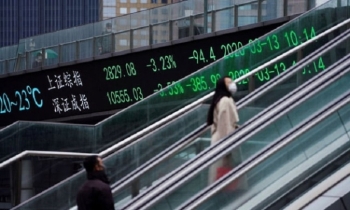WB projects Bangladesh’s lower economic growth to 5.6%
BI Report || BusinessInsider

Photo: Collected
Bangladesh made a strong recovery from the Covid-19 pandemic, but the post-pandemic recovery was disrupted in FY23 with rising inflation, financial sector vulnerabilities, external pressure, and global economic uncertainty, says the World Bank in its twice-year-update.
The global lender came up with the projection in a press testament on Tuesday.
The latest Bangladesh Development Update - New Frontiers in Poverty Reduction says that reforms to address inflation, through monetary and fiscal policies, as well as financial sector vulnerabilities will be critical for the country to sustain growth and poverty reduction.
A single market-based exchange rate would help attract foreign currency inflows through formal channels and support the balance of payment and reserve accumulation.
Supported by economic growth, Bangladesh improved living conditions and reduced extreme poverty to 5.0 percent in 2022 from 9.0 percent in 2016, which is comparable to Latin America and the Caribbean countries and fares better than the South Asian average.
The new poverty numbers are based on the international poverty line of $2.15 a day (using 2017 Purchasing Power Parity) and the Bangladesh Bureau of Statistics (BBS)’s Household Income Expenditure Survey 2022 and re-estimation for 2016.
“Bangladesh’s progress in reducing poverty is multi-dimensional–it has improved poor people’s wellbeing, including in reduced infant mortality and stunting, and improved access to electricity, sanitary toilets, and education. The rural areas witnessed faster poverty reduction than the cities and towns,” said Abdoulaye Seck, World Bank Country Director for Bangladesh and Bhutan.
“Despite these gains, inequality has slightly narrowed in rural areas and widened in urban areas. The World Bank stands ready to support Bangladesh to take on urgent reforms to accelerate inclusive economic growth.”
The report’s companion piece, the latest South Asia Development Update - Toward Faster, Cleaner Growth, also released today, says South Asia is expected to grow by 5.8 percent this year—higher than any other emerging and developing region in the world, but slower than its pre-pandemic pace and not fast enough to meet its development goals.
The regional report forecasts growth to slow to 5.6 percent in 2024 and 2025 in South Asia, as post-pandemic rebounds fade and a combination of monetary tightening, fiscal consolidation, and reduced global demand weigh on economic activity.
Growth prospects are subject to downside risks, including due to fragile fiscal positions. Government debt in South Asian countries averaged 86% of GDP in 2022, increasing the risks of defaults, raising borrowing costs, and diverting credit away from the private sector.
The region could also be affected by a further slowdown in China’s economic growth and natural disasters made more frequent and intense by climate change.
“While South Asia is making steady progress, most countries in the region are not growing fast enough to reach high-income thresholds within a generation,” said Martin Raiser, World Bank Vice President for South Asia. “Countries need to urgently manage fiscal risks and focus on measures to accelerate growth, including by boosting private sector investment and seizing opportunities created by the global energy transition.”
Constrained by fiscal challenges, South Asian governments have limited room to help their economies fully capitalize on the global energy transition.
For South Asia, the energy transition could present an opportunity for future growth and job creation—if it leads to more investments by firms, cuts air pollution, and reduces the reliance on fuel imports.
“South Asia’s energy intensity of output is about twice the global average and the region lags in the adoption of more advanced energy-efficient technologies,” said Franziska Ohnsorge, World Bank Chief Economist for South Asia. “Improvements in energy efficiency, in the context of a rapid global energy transition, are an opportunity for South Asia to make progress toward both environmental and economic goals.”
























